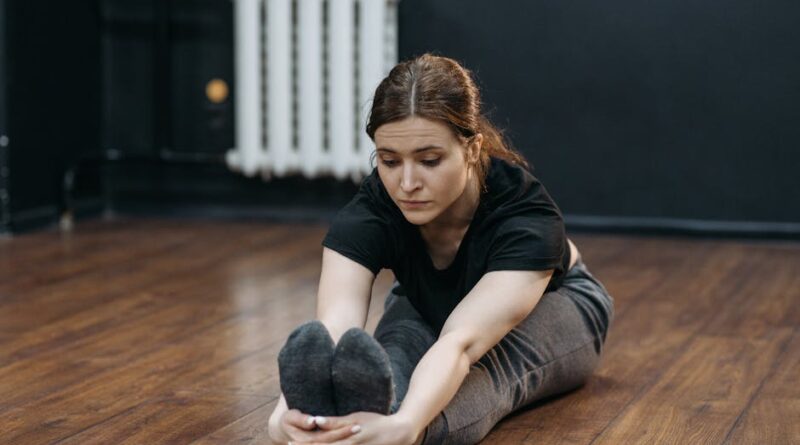Staying Active with Joint Issues: A Comprehensive Guide
Joint issues can be a challenging obstacle for many individuals looking to stay active and maintain a healthy lifestyle. Whether you suffer from arthritis, joint pain, or other musculoskeletal conditions, finding ways to exercise safely and effectively is crucial for your overall well-being. In this comprehensive guide, we will explore the various strategies, exercises, and tips for staying active with joint issues. From understanding the importance of physical activity to exploring low-impact workout options, we will delve into the world of joint health and fitness.
The Importance of Staying Active with Joint Issues

Despite the challenges posed by joint issues, staying active is essential for maintaining joint function, flexibility, and overall health. Regular exercise can help strengthen the muscles surrounding the joints, improve range of motion, and reduce stiffness and pain. Additionally, physical activity can help manage weight, which is crucial for reducing the strain on your joints.
Research has shown that individuals with joint issues who engage in regular exercise experience less pain and better overall function compared to those who are sedentary. Moreover, physical activity can help reduce inflammation, improve circulation, and promote the production of synovial fluid, which lubricates the joints.
Types of Exercises for Joint Health

When it comes to staying active with joint issues, it’s important to choose exercises that are gentle on the joints while still providing a good workout. Low-impact exercises are generally recommended for individuals with joint problems, as they reduce stress on the joints while still improving strength and flexibility.
1. Swimming
Swimming is an excellent low-impact exercise that can help strengthen muscles, improve cardiovascular health, and enhance joint flexibility. The buoyancy of water reduces the strain on the joints, making it an ideal workout for individuals with joint issues. Whether you swim laps in a pool or participate in water aerobics classes, swimming can be a fun and effective way to stay active.
2. Cycling
Cycling is another low-impact exercise that can be beneficial for individuals with joint problems. Whether you prefer riding a stationary bike at the gym or cycling outdoors, this activity can help improve joint mobility, strengthen leg muscles, and boost cardiovascular fitness. Just be sure to adjust the seat height and handlebar position to ensure proper alignment and reduce strain on your joints.
Strength Training for Joint Health

In addition to cardiovascular exercises, strength training is essential for maintaining joint health and function. By building muscle strength, you can support and stabilize your joints, reducing the risk of injury and improving overall mobility. When it comes to strength training with joint issues, it’s important to focus on proper form and technique to avoid putting undue stress on your joints.
1. Bodyweight Exercises
Bodyweight exercises, such as squats, lunges, and push-ups, can be effective for strengthening muscles without the need for equipment. These exercises can help improve joint stability, balance, and coordination. Start with a few repetitions and gradually increase the intensity as your strength improves, being mindful of any discomfort or pain in your joints.
2. Resistance Bands
Resistance bands are versatile tools that can be used to strengthen various muscle groups while being gentle on the joints. Whether you’re performing bicep curls, leg lifts, or shoulder presses, resistance bands provide resistance throughout the entire range of motion, helping to build muscle without causing strain on the joints. Be sure to choose the appropriate resistance level for your fitness level and gradually progress as you get stronger.
Flexibility and Mobility Exercises

Improving flexibility and joint mobility is crucial for individuals with joint issues, as it can help reduce stiffness, improve range of motion, and prevent injury. Incorporating stretching and mobility exercises into your routine can help enhance joint function and overall physical performance.
1. Yoga
Yoga is a popular form of exercise that focuses on flexibility, balance, and strength. Many yoga poses can help improve joint mobility, reduce stiffness, and promote relaxation. Whether you attend a yoga class or follow a video at home, incorporating yoga into your routine can be beneficial for your joint health.
2. Tai Chi
Tai Chi is a gentle form of martial arts that emphasizes slow, flowing movements and deep breathing. This practice can help improve balance, coordination, and joint flexibility. Many Tai Chi movements are low-impact and can be modified to accommodate individuals with joint issues. Consider taking a Tai Chi class to experience the benefits of this ancient practice.
Expert Opinions on Staying Active with Joint Issues
We reached out to Dr. Sarah Johnson, a rheumatologist specializing in joint health, to get her expert opinion on the importance of staying active with joint issues. According to Dr. Johnson, “Regular physical activity is key for managing joint pain and improving overall joint function. Individuals with joint issues should focus on low-impact exercises that strengthen muscles, improve flexibility, and promote joint health.”
Dr. Johnson also recommends working with a physical therapist or personal trainer who has experience with joint issues to develop a safe and effective exercise program. By tailoring your workouts to your specific needs and limitations, you can maximize the benefits of physical activity while minimizing the risk of injury.
Common Misconceptions about Staying Active with Joint Issues
There are several common misconceptions about staying active with joint issues that can prevent individuals from engaging in physical activity. One of the most prevalent myths is that exercise will worsen joint pain and damage. In reality, the right type of exercise can help alleviate pain, improve joint function, and enhance overall well-being.
Another misconception is that individuals with joint issues should avoid physical activity altogether. While it’s important to choose exercises that are gentle on the joints, complete inactivity can lead to muscle weakness, joint stiffness, and decreased range of motion. Finding a balance between rest and exercise is crucial for maintaining joint health.
Conclusion
In conclusion, staying active with joint issues is not only possible but essential for maintaining joint health, managing pain, and improving overall quality of life. By incorporating a variety of low-impact exercises, strength training, flexibility exercises, and expert guidance into your routine, you can effectively manage joint issues and stay active for years to come.
Remember to listen to your body, pay attention to any discomfort or pain, and adjust your workout routine as needed. With dedication, patience, and the right approach, you can overcome the challenges of joint issues and enjoy the many benefits of staying active.
To wrap things up, make joint health a priority in your fitness journey, and reap the rewards of a strong, flexible, and pain-free body.




